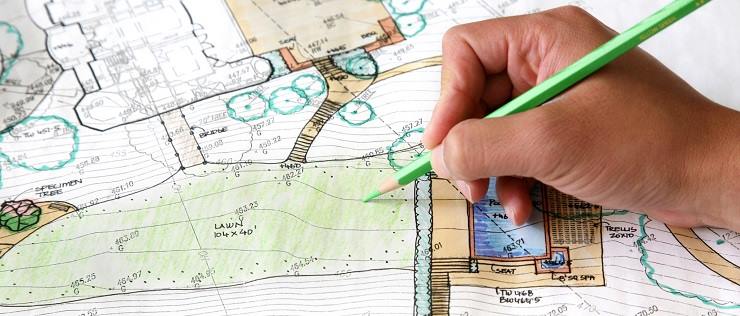There are many stages necessary to go from the decision to have a newly landscaped garden through the design, planning, and actual landscaping to be completed before you and others are at the stage where you can sit in and enjoy your new garden.
Unless the design is done correctly, taking into account the dimensions of the garden, the budget, the required features, and sound gardening principles with regards to what specific plants will be used, and where they will be located, any landscaping project is not going to be as successful as it otherwise could be.
Designing a landscaped garden can be done in many ways, with advanced software being the one that many landscape design companies might utilize, although not all. For others, it is the good old, tried, and trusted pencil and paper that are used, with a little help from some drawing implements such as a ruler.
The first stage with regards to drawing your landscape design does not need straight lines and 100% accuracy. Instead what you want to do is determine what you already have in your garden and record it by making rough sketches of where everything is located, and by making notes about what is there. This can include both natural features, such as a large tree, and non-natural such as existing garden furniture, fences, and walkways.
With this initial recce complete, you can now decide which of the existing items and features you are going to keep or include in your new design, and those which you are going to dispense with. Once that is done you now want to take accurate measurements of your existing garden including the length and width, and the distances between certain points which will play a key role in the design.
Now it is time to take those dimensions, plus all the information from the first stage, and to start creating an outline of your garden on paper. Ideally, you want lined paper, such as graph paper for this as it will help you draw straight lines more accurately, and it also makes it easier to scale your design. Include any features that are going to remain from your existing garden on this draft landscape design.
In effect, you are drawing a map of your garden as it currently exists, minus anything in it which you no longer wish to include in the new design. If it helps you, write short notes around the outside so that as you add elements to the design you will remember anything which needs to be taken into account.
Another excellent tip is to make more than copy of your initial map of your garden. This can be done either by using a photocopier, or if you do not have access to one, use tracing paper over your original and trace out a copy. The reason you want multiple copies is that it allows to either create more than one design in order to compare them, or if you feel you need to start again from scratch, you have a blank copy to use.
For those with very large gardens, there is always the option of dividing your garden into sections for the purposes of drawing out the draft design and making it more manageable for you. This way, you can design one section at a time.
